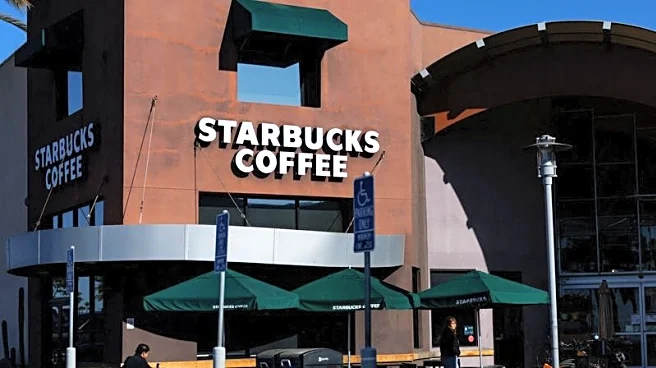What is the story about?
What's Happening?
Starbucks has unveiled a $1 billion restructuring plan aimed at revitalizing its North American operations. The plan includes closing approximately 1% of its company-operated stores in the region, which translates to over 100 locations, and laying off around 900 non-retail employees. This move is part of the 'Back to Starbucks' transformation strategy under CEO Brian Niccol. The restructuring is expected to incur $150 million in employee separation costs and $850 million in charges related to store closures. Starbucks is focusing on investing closer to the coffeehouse and customer to counteract a sales slump in its largest market, where same-store sales have declined for six consecutive quarters.
Why It's Important?
The restructuring plan is significant as it reflects Starbucks' response to increased competition and changing consumer preferences in the coffee industry. By closing underperforming stores and reallocating resources, Starbucks aims to strengthen its market position and improve profitability. The layoffs and store closures will impact employees and local communities, highlighting the challenges faced by large retail chains in adapting to market dynamics. The company's focus on enhancing customer service and operational standards through initiatives like the 'Green Apron Service' underscores its commitment to maintaining its brand reputation and customer loyalty.
What's Next?
Starbucks will continue to implement its restructuring plan throughout fiscal year 2025, with a significant portion of expenses expected during this period. The company will focus on investing in labor and operating standards to improve customer service and operational efficiency. Stakeholders, including employees, suppliers, and communities, will be closely monitoring the impact of these changes. Starbucks' ability to successfully execute its transformation strategy will be crucial in determining its future growth and competitiveness in the coffee industry.
Beyond the Headlines
The restructuring plan raises questions about the broader implications for the retail sector, particularly in terms of employment and community impact. As Starbucks navigates these changes, it may set a precedent for other companies facing similar challenges. The emphasis on customer-centric strategies and operational improvements could influence industry standards and practices, potentially leading to shifts in consumer expectations and business models.
AI Generated Content
Do you find this article useful?















